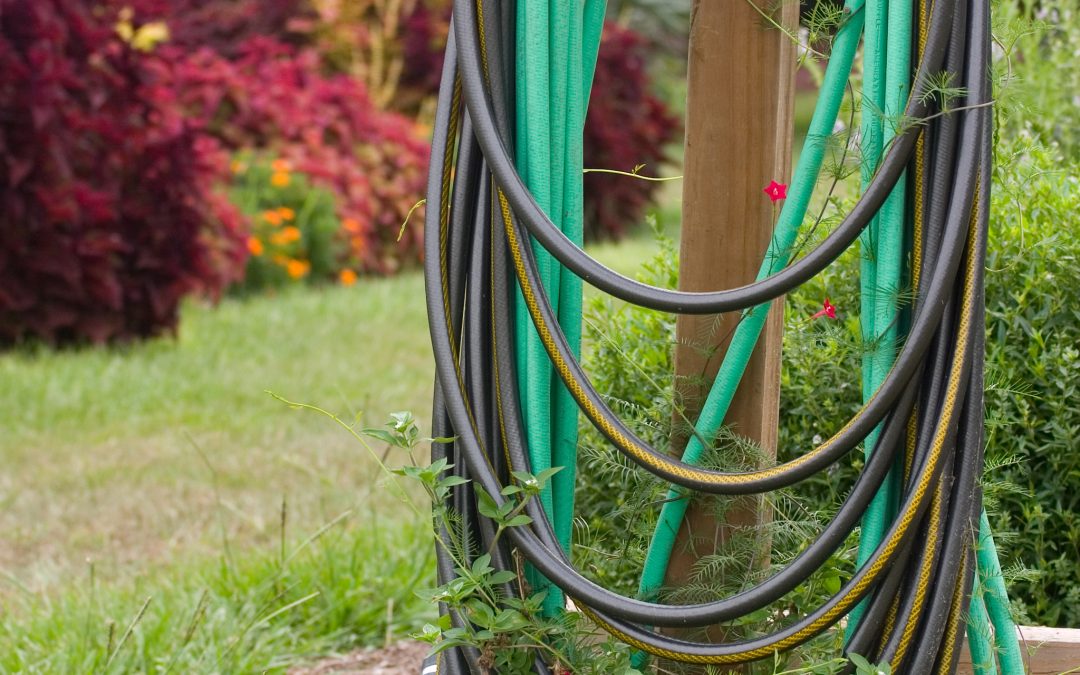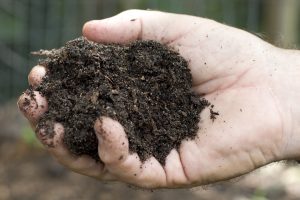by Lauren Goldsby | Jun 13, 2025
Most gardeners I know love to share plants. Propagating and dividing them can be just as much fun as growing them. Some of my favorite plants in the garden came from loved ones offering a cutting or telling me to dig up whatever I liked.
Lately, I’ve been thinking about how plants can serve as living memories of loved ones who are no longer with us. Many of the plants in my garden are there for that reason- some without me even realizing it. My home garden has become a small collection of plants and memories associated with those plants, and I am the proud keeper of their stories.

My dad’s fig tree came from a cutting of his grandfather’s fig tree. Newer varieties may yield more and resist disease better, but nothing compares to the fruit you grew up eating with your grandparents on the Fourth of July.

This year, for the first time, I got to enjoy hydrangea blooms from my late grandparents’ home. Before their house was sold, my aunt took last-minute stem cuttings from the bushes. After three years, they’re finally healthy enough to flower- and soon, I’ll take more cuttings to share with the rest of the family.
Sometimes, just being in the garden helps you feel closer to loved ones and the memories you shared. Even if it’s not the same exact plant, growing something they once grew can help you feel connected to them.

My great-grandmother always said you should have flowers growing in your garden so you can cut them and bring them to people when you visit. When I cut flowers from my garden for friends and family I feel like I am keeping her tradition going.
There are so many plants you can propagate and grow yourself. If you talk to someone who’s been propagating for a while, they’ll likely tell you that it’s as much an art as it is a skill. Try out different plants and methods to see what works best for you. Here’s a great video to get you started with the basics of plant propagation: FFL Plant Propagation Basics.
Are there any plants you grow because of a loved one? It’s never too late to start.

by Lauren Goldsby | May 8, 2025
It’s that time of year when you bump into a bumble bee and watch butterflies fluttering around as you water the garden. If you’re like me, you’ve been waiting patiently for butterflies to start laying their eggs. Butterflies and moths lay eggs on specialized plants that caterpillars depend on once they hatch. These host plants provide caterpillars with food, shelter, and protection- and they can be anything from a small weed to a tall oak tree.

Freshly hatched Gulf fritillary on passionflower

Monarch butterfly on echinacea
While host plants feed caterpillars, nectar plants feed butterflies. Host plants are specific to each butterfly or moth, while nectar plants attract and feed many different species. Provide a variety of shapes, sizes, and colors of flowering plants to attract different butterflies. To support all life stages of butterflies it’s important to have both host and nectar plants in your garden.
Keep an eye out for signs of caterpillars on your host plants and remember that these plants are meant to be eaten! Because caterpillars feed exclusively on their host plants, they won’t harm the rest of your landscape. Before you reach for pesticides when you see leaf damage, take a moment to identify what’s causing it. It may just be hungry caterpillars getting ready to transform into butterflies. For more information see this EDIS publication about butterfly gardening in Florida, https://edis.ifas.ufl.edu/publication/UW057.

Zebra longwing caterpillar on passionflower
Want to support both caterpillars and butterflies with one plant? Try passionflower! Florida is home to 6 native species of passionflower. Maypop or wild passionflower, Passiflora incarnata, is the showiest of these. Flowers of pink and purple cover the passionflower from the summer to fall, offering nectar for bees, butterflies and hummingbirds. Passiflora species are host plants for the zebra longwing and gulf fritillary caterpillars.

Passiflora incarnata

Gulf fritillary (left) and zebra longwing (right)

Gulf fritillary (left) and zebra longwing (right)

by Lauren Goldsby | Mar 27, 2025
It’s hard to miss the clusters of lavender colored flowers that seem to be growing everywhere right now. That’s because they are an invasive wisteria, doing what invasive plants do best: growing everywhere.

Wisteria vine wrapped around tree trunk
Photo: Tristan Hansford; Budwood.org
We often notice the invasive Chinese wisteria (Wisteria sinensis) and Japanese wisteria (Wisteria Floribunda) in the early spring because of their fragrant and showy flowers. Look closely, and you’ll see thick vines wrapped around trees, decks, and other structures. This dense growth outcompetes native plants by taking up available light, nutrients, and space. Eventually the vines can even kill the trees and damage structures they grow on.
Look-Alike Alternatives
If you love the look of the invasive wisteria, consider planting the native American wisteria (Wisteria frutescens) to achieve a similar look, without damaging structures or ecosystems. American wisteria is a native plant and a larval host plant for butterflies and moths, including the long-tailed skipper. It grows well in USDA zones 5 to 9.

American Wisteria
Photo courtesy of Robert H. Mohlenbrock, hosted by the USDA-NRCS PLANTS Database / USDA SCS. 1991.

Invasive wisteria has larger and less dense flower clusters.
Photo: UF/IFAS Lauren Goldsby
Invasive Wisteria Removal
Use the lavender colored flowers in the spring to locate invasive wisteria in your landscape. Invasive wisteria has long flower clusters (up to 50cm) and seed pods that are covered in dense hairs. American wisteria has shorter (5-10cm), denser flower clusters and seed pods that are hairless. If the vine you see is growing aggressively in natural areas, it is likely an invasive wisteria. You can always reach out to your local Extension office for help with identification.
Cut the vine as close to the root as possible and apply glyphosate to the cut stem with a sponge or paintbrush. Invasive wisteria can spread from seeds and stems so be careful to remove all plant material and dispose of it in your garbage not your compost bin. If you do not want to apply herbicide you can still cut the main stem but will need to come back to remove sprouts or dig up and remove the root system.
For more recommendations on vining plants that won’t take over, check out this article: Versatile Vines

by Lauren Goldsby | Feb 6, 2025
Last month, we experienced historic snowfall throughout the Panhandle. During these magical snow days, I noticed that I had to refill my bird feeder faster than expected. Even as snow fell, birds flocked to the feeder all day long.

UF/IFAS Photo by Cristina Carrizosa
In winter, birds rely more on bird feeders because many plants are dormant and aren’t producing food. Insects are also less abundant during the colder months. (Read about where they go here: Where Do Insects Go in the Winter?). Growing native plants in your landscape can help provide extra food sources for birds and habitat for overwintering insects. However, long periods of freezing temperatures, like those we experienced last month and in December of 2022, can damage natural food sources and make it even harder for birds to find food.
Consider supporting your local and migrating bird populations this winter by putting out a bird feeder. In return, expect a colorful show you can enjoy in your own yard! Here are some recommendations for success:
- Different birds are attracted to different types of food and have different feeding habits. To reduce mess, look for seed mixes that don’t contain milo, oats, and red millet, often labeled “no mess”. These seeds are less desirable to birds and often end up scattered on the ground, which can attract rodents. Uneaten millet seeds can sprout and grow under bird feeders.

Millet growing under bird feeder from uneaten seed.

Pine cone bird feeder
- Suet is an excellent choice for winter feeding because it’s a high-protein, high-energy food source for birds. You can buy suet at the store or make your own using this recipe: DIY Suet Recipe. Another fun, homemade option is the classic pinecone bird feeder made with peanut butter or lard. This kid-friendly activity can be found here: Pinecone Bird Feeder
- It’s important to clean your feeders every two to three weeks to prevent the spread of diseases, get rid of moldy seeds, and keep the birds healthy. Most bird feeders can be cleaned with a 10% bleach solution, while wooden feeders are best cleaned with hot, soapy water. Sugar water in hummingbird feeders should be changed every 3-5 days or more frequently if they’re in direct sunlight or hot weather. Don’t forget to wash your hands after cleaning or refilling your bird feeder!
The best way to support your local birds is by planting native plants and providing a safe habitat in your yard. Native plants produce food and attract insects that birds feed on, helping them thrive year-round. When food is scarce, bird feeders can be an important supplement, but regular cleaning is essential to maintain bird health.
For more detailed information on feeder selection, food types, and tips, visit: Bird Feeder Guide.

by Lauren Goldsby | Dec 13, 2024

UF/IFAS Photo by Tyler Jones
Many of us experienced our first freezing temperatures in the Panhandle last week. As we welcome winter, here are some helpful resources to prepare your plants when temperatures dip in the months ahead:
Frost in the Panhandle? Practical Tips for Protecting Your Garden
Cold Protection of Landscape Plants EDIS
One tip you’ll often see in these recommendations is to water your plants before a freeze. At first, this might seem counterintuitive, but wet soil can actually help your plants weather freezing temperatures for several reasons.

Soil naturally has small pockets of air. UF/IFAS Photography: Tyler Jones.
Water’s ability to absorb and hold heat—known as high specific heat—makes it a powerful tool against cold stress. Dry soil contains air spaces that don’t hold heat well. By watering your soil, you replace those air pockets with water, which absorbs more heat during the day and releases it slowly at night. This helps keep the soil and roots warmer than the surrounding air. Covering plants with sheets and frost cloth can help trap this warmth around the plants.

Dehydration from freeze damage can make leaf tissue look similar to drought stress. UF/IFAS Photo by Cat Wofford
Beyond heat retention, water also reduces the effects of cold stress. Both freezing and drought conditions cause plant cells to lose water, leading to dehydration. Water is essential for many plant functions including photosynthesis, nutrient transport, and maintaining structural support of the plant. Good water availability within the plant before the freeze helps reduce the water stress associated with cold damage. However, watering right after a freeze will not provide the same benefits because root activity slows in the cold weather.
For best results, water the soil in the morning before a freeze, focusing on the soil, rather than the leaves, as wet leaves are more prone to freeze damage. During fall and winter, plants generally require less frequent watering, so check the soil moisture before watering to avoid overwatering. Standing water can harm roots and increase stress on the plant.

Get familiar with your soil by checking moisture level before you water. UF/IFAS Photo by Tyler Jones























